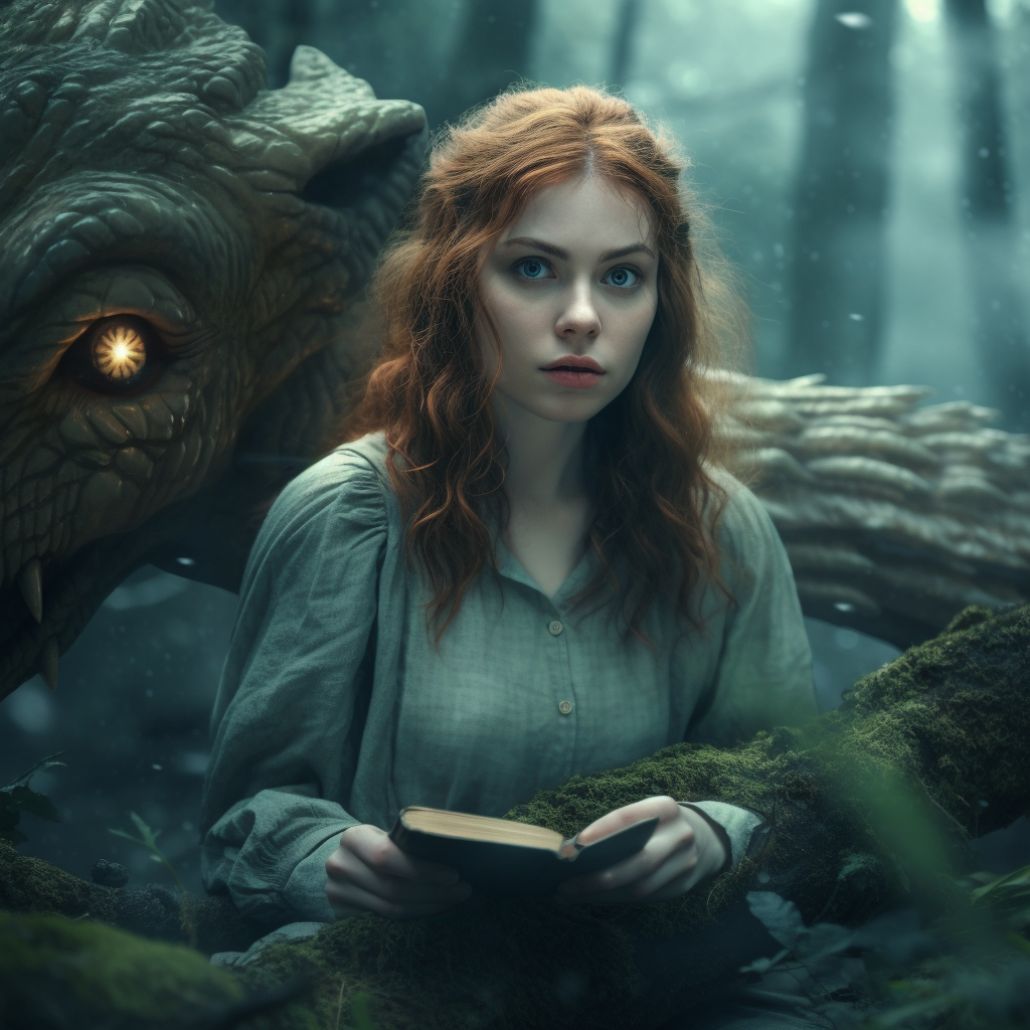If you grew up in North America, you might be familiar with the word Wendigo. This fearsome creature was known for prowling spirit-like through the forests, preying on human beings.
In this article, we’ll explore the rich mythology and legend of the Wendigo, from its role in indigenous cultures to its influence on pop culture.
What is a Wendigo? The Wendigo is an evil spirit found in Native American mythology. It’s often described as a flesh-eating monster with an insatiable greed for human flesh. According to legend, the Wendigo devours mankind during brutally cold winters when food is scarce. Its appearance is said to be gaunt and skeletal, with desiccated skin pulled tautly over its bones and eyes pushed deep into their sockets. The complexion of the Wendigo is often described as the ash-gray of death.
Origins of the Wendigo
The word Wendigo comes from the Algonquian language and is spelled in various ways, including Windigo and Windego. The creature has been a part of Native American lore for centuries and has been mentioned in many myths from different tribes throughout the continent.
The legend of the Wendigo tells that if a person becomes possessed by the Wendigo spirit, they will turn into the creature themselves. Some indigenous peoples believe that the Wendigo is a result of a curse. In contrast, others say it’s a natural response to cannibalism or an ailment unknown to non-native people due to modern medicine.
Related: Journeys Out Of The Body – Investigating Robert Monroe’s Revolutionary Experiences
The Wendigo in Indigenous Cultures
The Wendigo is an essential character in many Native American legends and is considered one of the most dangerous spirits to encounter. According to folklore, it’s a disease of the mind known as Wendigo psychosis. Cravings for human flesh and violent behavior characterize this mental illness. The Wendigo character is often used to warn against cannibalism, considered taboo in many indigenous cultures.
The earliest known Wendigo legend comes from the Cree nation, who lived in what is now Canada and the northern United States. According to Cree mythology, the Wendigo was once a human being who turned into a monster after resorting to cannibalism during a brutally cold winter. The transformation was caused by an evil spirit taking over the person’s body and turning them into a Wendigo.
Wendigo Sightings
There have been numerous reports of Wendigo sightings throughout history. The most famous cases come from the Eastern Cree and Ojibwe cultures, where the creature’s appearance was described as a skeletal humanoid with an eerie odor of decay. The Wendigo is said to be a swift runner and can quickly disappear into the forest if pursued.
One of the most famous Wendigo stories is that of Jack Fiddler, a Cree chief and shaman who claimed to have killed 14 Wendigos throughout his life. However, when arrested for murder in 1907, he argued that he had been fulfilling his duty to rid his people of dangerous spirits, including Wendigos. Jack committed suicide before he went to trial.
In recent years, several purported sightings of the Wendigo have been in different parts of the world. In 2015, a group of hikers in Northern Minnesota claimed to have seen a creature that matched the description of a Wendigo.
The creature was said to have an eerie odor and appeared to be watching the hikers from a distance. Despite the abundance of sightings, there is no scientific evidence to support the existence of the Wendigo.
Wendigo in Pop Culture
The Wendigo has appeared in many movies, television shows, and video games. In pop culture, the Wendigo is often depicted as a ferocious and terrifying monster that preys on unsuspecting victims to eat human flesh.
Some depictions show Wendigos as veritable werewolves with desiccated skin, pulled tightly over their bones, eyes pushed back deep into their sockets, and a canine hunger for human flesh.
One of the most notable depictions of the Wendigo in pop culture is in the television show Supernatural. In the show, the Wendigo is portrayed as a supernatural predator that feeds on the flesh of humans. The mythical creature’s appearance is described as gaunt and skeletal, with long claws and an eerie odor of decay.
Debunking the Wendigo Mythology
While the Wendigo is undoubtedly a fascinating creature, no scientific evidence supports its existence. Some people believe that the legend of the Wendigo is simply a result of cultural taboos and other legends about unexpected death and mental illness. Others suggest that the strange and eerie odor often associated with the Wendigo results from decaying organic matter in the forest.
Many scholars argue that the Wendigo legend is a metaphor for something else entirely. For example, some say that it reflects human nature’s propensity to become greedy and selfish during times of scarcity, while others suggest that it warns against isolation and loneliness.
In the early 20th century, psychiatrists began to describe a psychiatric disorder known as Wendigo psychosis, which was believed to be prevalent among Native American tribes in northern Alberta and Minnesota. Symptoms of windigo psychosis included an intense craving for human flesh, a belief that the person had been or was in danger of being transformed into a Wendigo, and a tendency towards violent and aggressive behavior. However, this ailment is unknown to modern medicine and may have resulted from cultural misunderstandings.
You may also like The Pioneers of Near-Death Experiences Exploring Raymond Moody’s Findings
Conclusion
The Wendigo is a creature deeply rooted in Native American mythology and has fascinated people for centuries. Whether it’s a natural creature-possessed person or not, the legend of the Wendigo reminds us of the darker side of human nature and the importance of respecting cultural taboos.
From the first nations communities to pop culture, the Wendigo has captivated the hearts and minds of all these cultures and species, and it will continue to do so for many years to come.
While the Wendigo remains unproven, its influence on popular culture and folklore is undeniable. Whether through movies, television shows, or video games, the Wendigo continues to terrify audiences and captivate imaginations. As we continue to explore the mysteries of the natural world, it’s important to remember the power of storytelling and the enduring influence of myths and legends like the Wendigo.
Frequently Asked Questions
What does a Wendigo do?
Wendigos are often portrayed as malevolent creatures that hunt and feed on human flesh. According to legend, they are spirits of the forest who were once human but turned to cannibalism.
This act of consuming human flesh is what transforms them into Wendigos. They are said to have an insatiable hunger for human flesh and will do anything to satisfy it. Some stories also describe them as possessing shapeshifting abilities and other supernatural powers.
Don't miss What Is Astral Projection? – Exploring The Basics Of This Phenomenon
Where do Wendigos live?
Wendigos are primarily associated with the Algonquin-speaking tribes of North America, specifically in the Great Lakes and Atlantic Coast regions. According to legend, they inhabit remote forested areas where few humans venture. Some believe they reside in caves and other natural formations deep within the wilderness.
What is the story behind Wendigo?
The legend of the Wendigo originates from the beliefs of Native American tribes, particularly those in the continent’s northern regions. It is said that the Wendigo was once a human who turned to cannibalism during times of famine or extreme hardship.
This act transformed them into a monstrous spirits, doomed to roam the earth in search of human flesh to consume. The Wendigo is often used as a cautionary tale, warning against the dangers of greed and the consequences of turning to dark forces.
What does an actual Wendigo look like?
The appearance of the Wendigo varies depending on the source, but it is often described as a tall, thin creature with glowing eyes and a skeletal frame. Some interpretations depict it as having antlers or horns on its head, while others portray it as having a more humanoid form. The Wendigo is depicted as a frightening and otherworldly creature that inspires fear and awe in equal measure.
What is the Wendigo curse?
The Wendigo curse is a supernatural affliction that transforms a human into a Wendigo. It is said to occur when a person consumes human flesh to survive during famine or hardship. This act is believed to invite the Wendigo spirit into the person’s body, transforming them into monstrous creature with an insatiable hunger for human flesh.
What powers do Wendigos have?
Wendigos are often depicted as possessing supernatural powers, such as shapeshifting, invisibility, and the ability to control the weather. They are also said to be incredibly fast and robust, making them formidable opponents. Some stories describe them as able to induce madness in those who cross their path, driving them to commit acts of violence and cannibalism.
Related Article Reincarnation Questions
Is Wendigo a mythical creature?
Yes, the Wendigo is considered a mythical creature from Native American folklore. While there are many legends and stories surrounding the Wendigo, there is no scientific evidence to support its existence.
What is a Wendigo weakness?
The Wendigo is often portrayed as an invincible creature with few weaknesses. However, some stories suggest that it can be defeated using fire or silver weapons. Others believe it can be banished using certain rituals or through certain herbs and talismans.
What is a real Wendigo called?
No real Wendigo exists, as the creature is purely a mythological creation. However, there have been reported cases of individuals exhibiting behaviors similar to those associated with the Wendigo legend, such as cannibalism and extreme violence. These cases are often attributed to mental illness or other factors.



